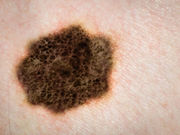And, sex, sexual orientation, race/ethnicity impact the prevalence of indoor tanning use among youth
THURSDAY, Dec. 29, 2016 (HealthDay News) — There is regional variation in the incidence and death rates for melanoma; and sex, sexual orientation, and race/ethnicity impact the prevalence of indoor tanning use, according to two research letters published online Dec. 28 in JAMA Dermatology.
Jessica S. Mounessa, from the Denver Veterans Medical Center, and colleagues compared regional trends in the death and incidence rates of melanoma for 2003 and 2013. The researchers found that 23 of the 48 states with reported melanoma death rates for the 2003 and 2013 periods experienced a decrease, four experienced no change, and 21 states experienced an increase. Of the 49 states with reported melanoma incidence rates, 11 and 38 experienced a decrease and increase, respectively.
Aaron J. Blashill, Ph.D., from the San Diego State University, used data from the 2015 Youth Risk Behavior Survey to examine indoor tanning by sex, sexual orientation, and race/ethnicity. Data were included for 10,644 individuals (1,240 sexual minority participants). The researchers found that among black participants, sexual orientation and sex had main effects (odds ratios [ORs], 4.48 and 2.63, respectively), with elevated indoor tanning reported by sexual minorities and males. There was a main effect of sexual orientation among Hispanic participants (OR, 3.92), with elevated indoor tanning for sexual minorities. Among white participants, a sexual orientation by sex interaction was seen; sexual minority status was a risk factor for males (OR, 3.17) and a buffer variable for females (OR, 0.41).
“Results highlight the need to incorporate sex, sexual orientation, and race/ethnicity when developing skin cancer prevention programs for youth,” Blashill writes.
Full Text – Mounessa
Full Text – Blashill (subscription or payment may be required)
Copyright © 2016 HealthDay. All rights reserved.








